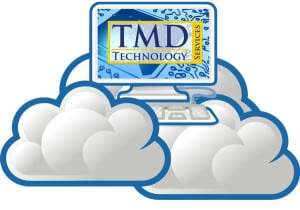 An office move requires careful planning and forethought. The following considerations provide valuable guidance for moving your office technology.
An office move requires careful planning and forethought. The following considerations provide valuable guidance for moving your office technology.
- Think of the move as an opportunity to a better network | An office move can provide the perfect opportunity to re-evaluate your IT systems, introduce new technology and upgrade your equipment.Consider the future of your company and the flexibility your network will need as your company expands. Assess your needs and work out exactly what you will need to add to provide for your future growth. You may even want to explore new cloud services ahead of your move to mitigate certain pain points.
- Hire a network professional to fine tune your information systems | Obtaining expert advice long before the move will help take the guesswork out of what equipment and Internet connectivity you’ll need. Let a professional design and manage the implementation of the network and absorb the difficulties associated with troubleshooting new setups.You also get an idea of what the costs will be, including the benefits of on-going maintenance and support. Planning the installation process with a professional takes the load off your shoulders and many unseen thorns out of your side.
- Save on downtime with proper planning | Install the new system over the weekend or during your downtime to minimize disruption to the business. If the installation will take longer, inform clients and users in advance so they know what to expect. Often this will eliminate or at least lessen the many angry messages you will need to respond to once back online.One client reported, “Before we moved offices, we sent an email to all of our clients informing them about the move and provided all our clients with alternate contact details. We received valuable business related calls thanks to this pre-planning”
- Moving valuable, sensitive equipment requires care | Moving servers, computers and network equipment takes great care. These devices are often heat, moisture and shock sensitive.A moving truck is obviously an essential part of the office move, though extra care needs to be taken concerning packaging.
- Prepare for impact | Your delicate electronics need to travel comfortably between cushioned barriers, preventing devices from jarring together. Wrapping the equipment in anti-static bubble wrap helps shield the equipment preventing the loss of valuable data.Equipment should ideally be placed in crates. Each crate should be dedicated to one complete system that is labelled for easy identification.
- Consider added Insurance | When it involves your businesses crucial digital data, ensure you have a back-up plan in case something happens during the move. Most insurance companies offer various policies for insuring computers against theft and damage.
- Find out if your new building has the facilities for your network | Be sure to conduct a site survey and evaluate what your network needs are. This helps to curb overspending on equipment and identifies the best possible locations for installing access points. It also ensures that sufficient internet provider options are available in the new location. Internet can take 30-120 days to install depending on the technology.
- Things work better when cabling is installed before the move | Before the move goes ahead, the new network’s cabling and network infrastructure should be in place and ready for each labeled workstation crate to be placed next to the correct plugs, power leads and phone lines.
- Power On: Starting up the new network | Expect a few glitches; problems are inevitable with any office move or new network. Having a professional available onsite for the first day or two is an invaluable asset and well worth the investment. Installation support ensures that the company can deal with any unforeseen problems during this initial start-up period.
- Lastly, don’t go at it alone | Many companies go down the DIY computer networking route before seeking advice from professionals. Having a professional on board before the move will not only save you time, but save you money. Unless you have a qualified team, installing a network can turn ugly and extremely frustrating.
 Don’t wait until it’s too late! Call TMD Technology Services early so we can help plan your move and evaluate the options for your new location. (561) 404-9251.
Don’t wait until it’s too late! Call TMD Technology Services early so we can help plan your move and evaluate the options for your new location. (561) 404-9251.
- Onsite Business Computer Support
- Monthly Managed IT Services
- Web Design and Internet Marketing
- Computer Repairs and Upgrades
Our initial consultation is FREE.


 The 2014 hurricane season is here, are you prepared? What about your business? Let us review your backup and disaster recovery plans. We can perform a review of your infrastructure design and make recommendations on procedures and technology solutions that match your needs.
The 2014 hurricane season is here, are you prepared? What about your business? Let us review your backup and disaster recovery plans. We can perform a review of your infrastructure design and make recommendations on procedures and technology solutions that match your needs.